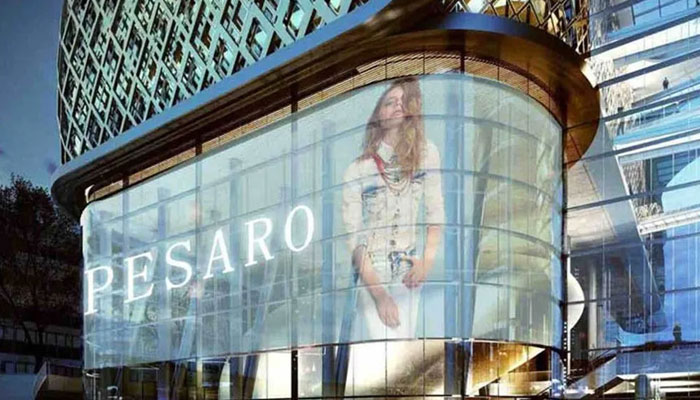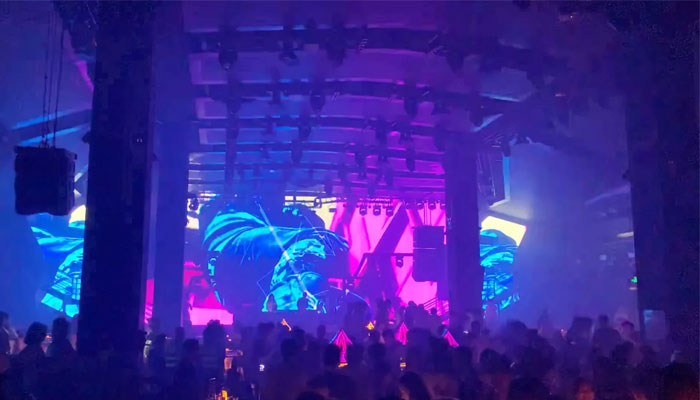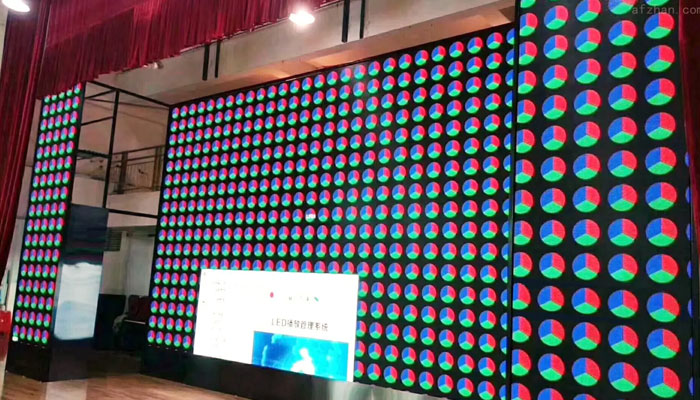LED transparent screens are favored by many advertisers because of their beautiful and transparent images, and do not block the line of sight, so they can better match the environment. Compared with traditional LED screens, their lighter weight has obvious advantages, so let’s talk about the weight per square meter of the transparent LED display today.
At present, the popular transparent cabinets on the market are mainly aluminum-shaped and die-cast aluminum, iron is rare, and the weight of the transparent LED screen of the cabinet with different profiles is different.

1. Aluminum profile LED box: can be used in the field of standard products and customized products. It has low density, lightweight, high strength, good heat dissipation, and easy installation, but the production cycle is slow, and the assembly has slight gaps. The price is expensive. The box size is 1000×500mm area. It is 0.5 square meters, and the weight of the box is about 6kg, that is, 12kg per square meter.
2. Die-cast aluminum LED box weight: used in rental places, stage art, exhibitions, and other fields, standardized products are produced quickly, light in weight, reasonable in structure, and high in splicing accuracy but not easy to customize, so customized demand projects will not use this material. The size of the box is 1000×500mm the area is 0.5 square meters, and the weight of the box is about 7.5kg, which is 15kg per square meter.
3. Iron profile LED cabinet: It can be used in standard and customized fields. The weight is heavier and the production cycle is slow. There is a slight gap in the assembly. The weight per square meter exceeds 20kg.
4. Carbon fiber LED cabinet: ultra-thin, ultra-light, and strong, with a weight of only 9kg per square meter. The fully modular design is more convenient for maintenance. At the same time, it provides a non-transparent back panel suitable for large-area installation in the field of outdoor advertising lights in stadiums.

From the above content, it can be seen that the weight of the transparent LED display is related to the material used. Generally speaking, it is much lighter than the conventional LED display. After knowing the weight, let’s take a look at how to choose a suitable transparent LED display
1. Ambient brightness: If it is a shop window facing the street, it is recommended to choose a white balance brightness of 4000cd and above. If the shop window is exposed to direct sunlight and there are higher requirements for the display of the window LED transparent screen during this time, you need to select the white balance brightness to achieve 5500cd or even more than 6500cd, if it is a shop window LED transparent screen brightness in a shopping mall, the brightness of the LED transparent screen can be reduced. The recommended brightness for shopping malls with glass curtain walls on the ceiling is around 3000cd. , If it is in a dark environment, you can choose an 800-1000cd LED transparent screen.
2. Configuration requirements: The quality of a large factory is not necessarily good. The quality of a small factory is poor. The main core is to look at the raw material brand of the transparent screen (lamp beads, power supply, IC, etc.) and the factory\’s familiarity with the transparent screen. The budget is very important. If the map is cheap, you still have to consider the budget and your own expectations.
3. Whether to customize: most of the window glass has been designed or installed, but the glass is difficult to support rework and replacement, the standard box size of the window LED transparent screen is 1×0.5 meters, this size may not be able to meet the size of the window, This time you need to customize the size, and the cost will be extra high.
4. Keel requirements: the display window LED transparent screen keel hidden behind the display surface will not cause damage to the screen picture, so most projects do not need to pay attention to the keel, but when the screen is not lit or the backlight is strong, the keel is visible, so some the project will require the number of keels to be reduced or the width of the keel to be reduced, or even the keel is completely hidden.
5. Whether corners and arcs: Some showcases involve the splicing of the left and right glass with angles, such as right-angle splicing or arc-shaped showcases. At this time, the transparent screen with positive light-emitting technology is the best choice, and its cost is much lower than that of side-emitting.




